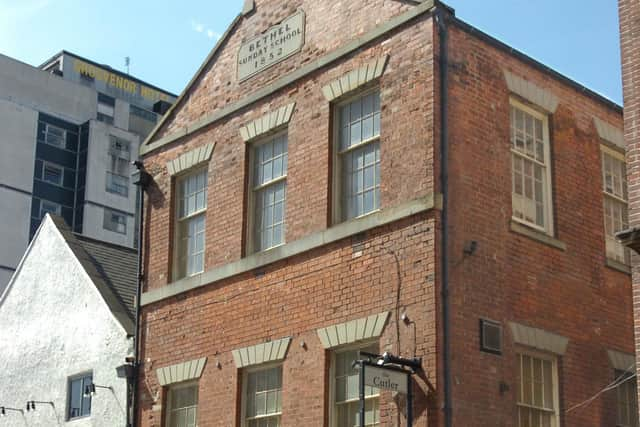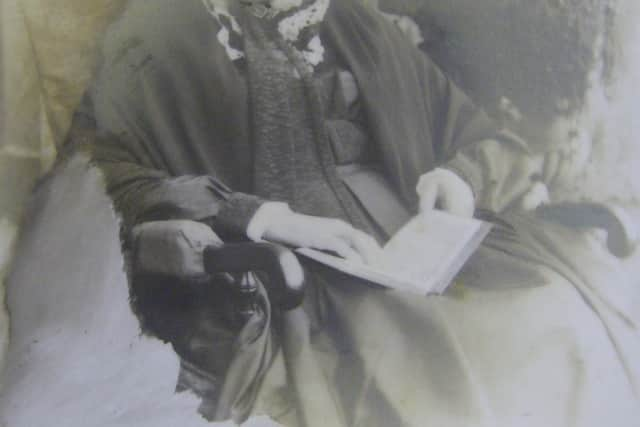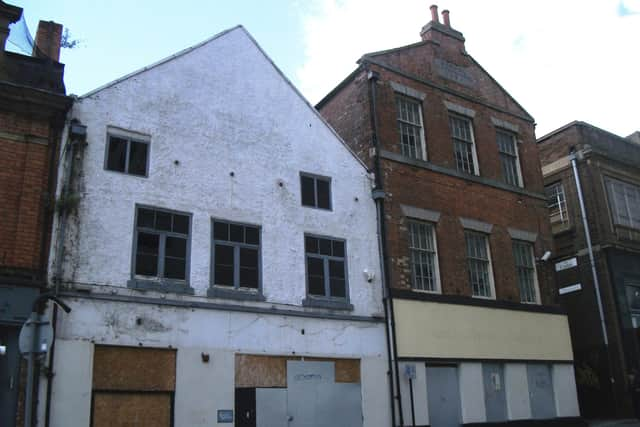A complex history of Sheffield's links to the slave trade


Cambridge Street or Coal Pit Lane was the town boundary and originally stretched from Union Street to Holly Lane.
West Street was at that time West Fields and Pinstone Street was Pinstone Lane. The street that we now call The Moor was a path between 16 acres of common land with grazing animals and some scattered dwellings and possibly some small coal pits.
Advertisement
Hide AdAdvertisement
Hide AdCoal Pit Lane was so called because mining coal had once taken part there, but by the late 17th century it was becoming more part of the town.


Joseph Downes, master cutler, is recorded as having six hearths there in 1693 which would suggest a substantial house.
By the 1730s the apprenticeship records show the lane bustling with activity. In 1735 Edward Bennet took on the wheel at the bottom of The Moor (where Decathlon is).
He had a house at the corner of Coal Pit Lane and Pinstone Lane, a smithy on The Moor and a barn. In 1738 his son Edward Junior was born.
Advertisement
Hide AdAdvertisement
Hide AdEdward senior and his wife Hannah were early Methodists. Often sheltering John Wesley from the mob in their house, and making several attempts to build a chapel, which the mob frequently burned down.


Young Edward took a job in London to mend the armour in the Tower of London and returned, having married a widow in 1756 and not long after, returned to Coal Pit Lane with a method for refining sugar.
His refinery was to become the second largest in England. He built his sugar house at the bottom of Coal Pit Lane where it met Union Street.
Methodist minister George Whitfield sometimes preached from its doors.
Advertisement
Hide AdAdvertisement
Hide AdWhitfield was to become at the heart of the Abolitionist society, yet Bennet was at the heart of slave trading acquiring his sugar from Liverpool.
For the English slave traders it was a three-legged journey called the ‘triangular trade’. Slaves were exchanged for trade goods including tools and guns, the slaves were then transported for sale in the West Indies and North America, and the money used to buy rum and sugar to sell back in England.
One of the principle slave trader merchants was Thomas Staniforth, originally from Darnall. It is estimated he helped finance the transport of 7,000 slaves a year.
It is known that some Sheffield manufacturers sold trade goods to the Liverpool merchants but how many did it is difficult to say.
Advertisement
Hide AdAdvertisement
Hide AdAt least 70 percent of the 12 million or so captives who left Africa were destined for sugar colonies. The average life span of a mill hand on the plantation was said to be only seven years.
Overworked slaves who fed the cane stalks into the mechanical rollers often lost hands or were pulled into the rollers and dismembered.
This outcome was common enough that a slave was often stationed nearby with a sword to sever the mill feeder’s arm before she could be pulled to her death in the rollers.
The death rates on such plantations were compounded by malnutrition and disease, and were so obscenely high that the ranks of the enslaved needed constant replenishment.
Advertisement
Hide AdAdvertisement
Hide Ad“ By such wicked and inhuman ways, the English are said to enslave towards 100,000 yearly, of which 30,000 are supposed to die by barbarous treatment in the first year,” Thomas Paine, 1775.
Around 1774 Bennet built an independent chapel near the sugar house and officiated as preacher.
In 1787 the abolitionist societies were formed throughout England, including Sheffield.
Edward died in 1788 the same year that The Moor was enclosed.
Advertisement
Hide AdAdvertisement
Hide AdEdward Bennet had no direct heirs and his estate fell to George Bennet, a bookseller and stationer and friend of James Montgomery. The sugar refinery continued for a while after Bennet’s death.
In 1807 the slave trade was prohibited. But changes to beet sugar and the Quaker-led boycott of sugar from slave plantations made many cane sugar refineries. In 1836 the refinery was pulled down.
Montgomery and George Bennet created the town’s Sunday School Union, uniting a Sunday school in Coal Pit Lane with six others in the city, expanding the union to include a total of 48 affiliated schools by 1824.
In 1790 a bequest from Edward Bennet had led the congregation in Bennet’s chapel to build a new chapel in Howard Street and in 1825 Bennet’s chapel was demolished and the present Methodist chapel built.
A new Sunday school was built next to it in 1852.
Advertisement
Hide AdAdvertisement
Hide AdGeorge Bennet spent his uncle’s bequest on missionary work and fighting for the abolition of slavery.
He was a close friend of the Reads in Wincobank and fascinated their daughter, who became the passionate abolitionist Mary Ann Rawson.
Bennet and Montgomery, however ,were for staged freedom of the slaves, whereas Rawson wanted total, immediate freedom.
She also criticised missionaries for enabling slavery rather than challenging it.
Advertisement
Hide AdAdvertisement
Hide AdGeorge Bennet died in 1841 and was buried in the General Cemetery. His monument is close to the Samuel Worth Chapel.
Bennet’s wheel seemed to have been demolished in the 1830s. Coal Pit Lane was widened and its name changed to Cambridge Street in 1857.
In 1859 a notice was posted in the paper for the return of a 20-year-old slave to a South African farmer.
The general public were outraged as slavery had been abolished. He appeared again at Cowmouth Farm in Norton, knocking on the farmer’s door asking for food. He spent several weeks living in the woods at Norton.
Advertisement
Hide AdAdvertisement
Hide AdThe police and anti-slavery society took an interest and hundreds of workmen searched for him. He was found near Aston but escaped. No-one seemed to know what happened to him.
But a few years later in Backfields, next to Coal Pit Lane, a black South African was working as a porter, married to a local girl and with a young daughter. Maybe that was him?
Thank you to all who support local journalism with a digital or print subscription to The Star. The events of 2020 mean trusted, local journalism is more reliant than ever on your support. We couldn't do it without you. Subscribe here www.thestar.co.uk/subscriptions so we can keep campaigning on your behalf. Stay safe.